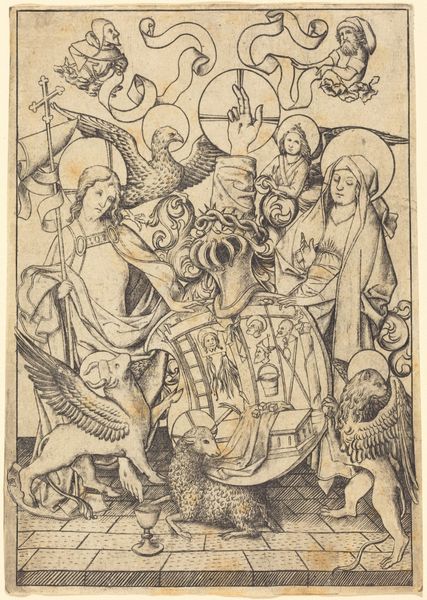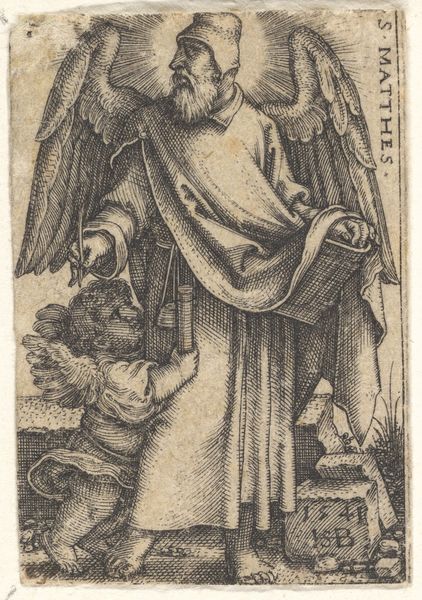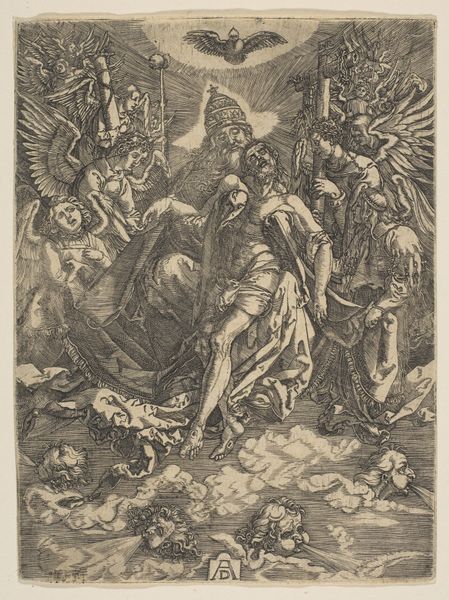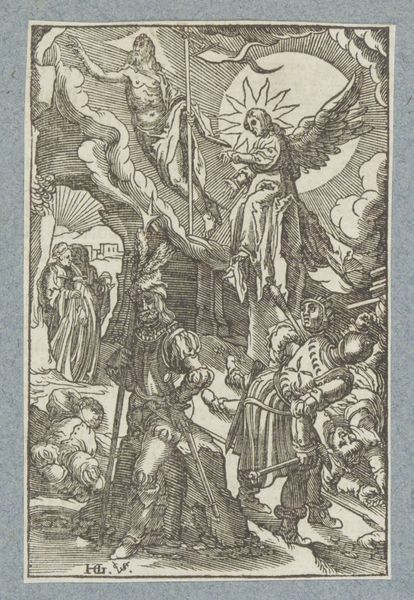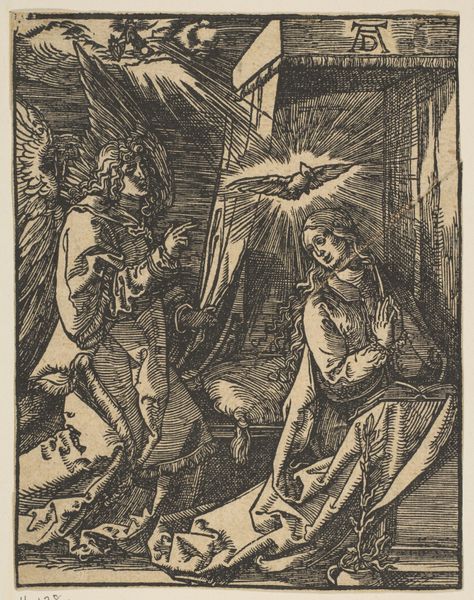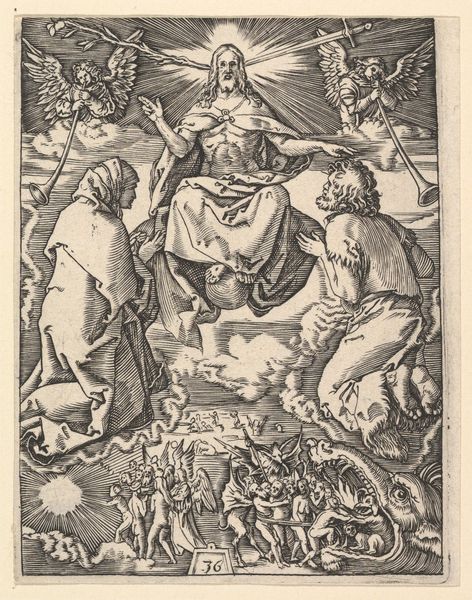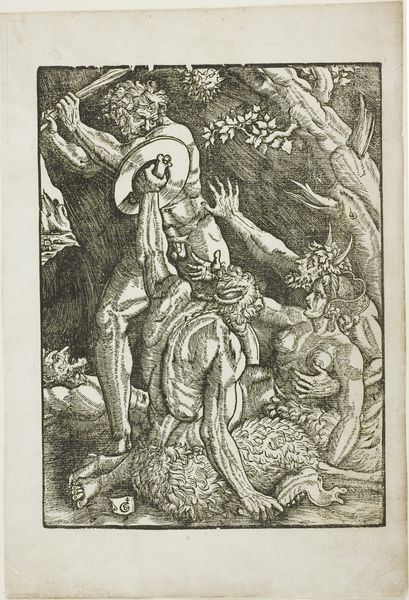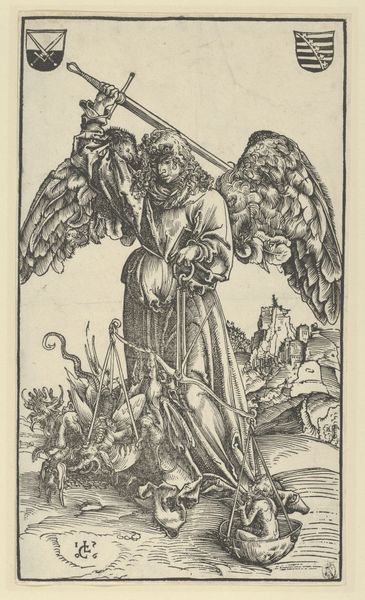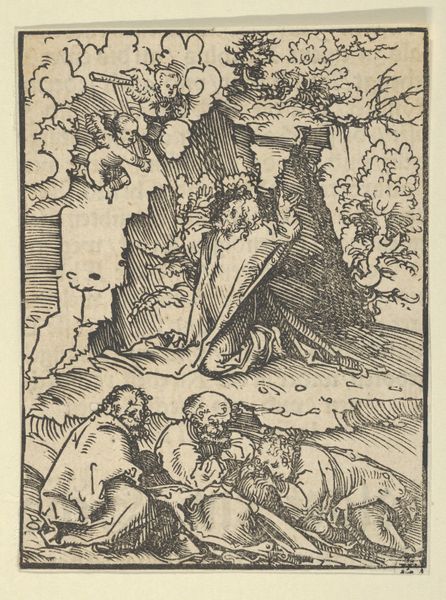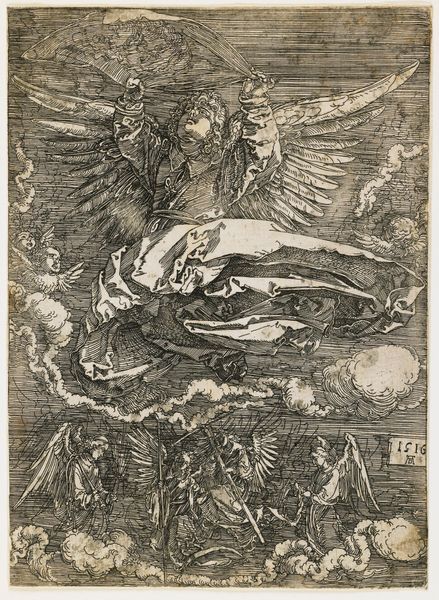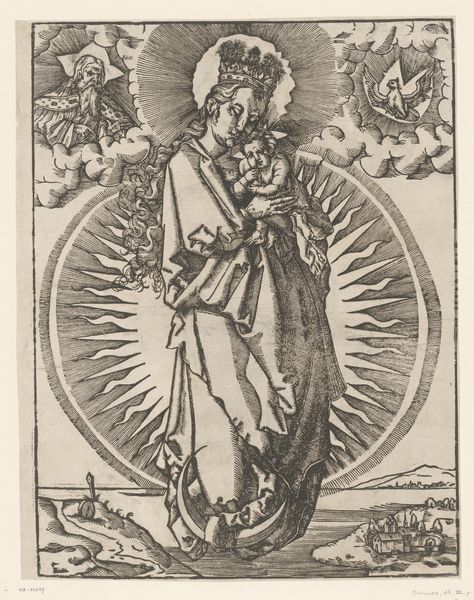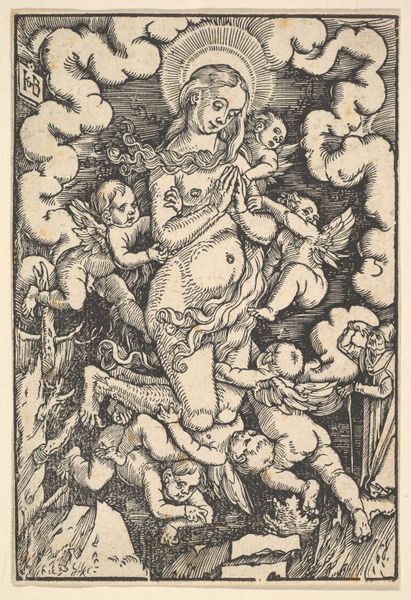
print, intaglio, engraving
#
medieval
# print
#
intaglio
#
figuration
#
history-painting
#
northern-renaissance
#
engraving
Dimensions: plate: 14.2 × 9.1 cm (5 9/16 × 3 9/16 in.) sheet: 29.8 × 22 cm (11 3/4 × 8 11/16 in.)
Copyright: National Gallery of Art: CC0 1.0
Curator: This engraving, "Saint Michael," crafted by Israhel van Meckenem around 1470-1480, showcases the iconic archangel in triumphant battle. Editor: My eye is drawn immediately to the intricate textures! The contrasting details of the smooth armor, the feathered wings, and even the monster on the ground offer such tactile interest. How was this effect achieved? Curator: As an intaglio print, the image was carved into a metal plate. Think about the labour: each line meticulously etched, then inked, and finally pressed onto paper. Van Meckenem, known for his prolific output and detailed style, undoubtedly ran a workshop utilizing these crafts to great effect. Editor: Van Meckenem’s Saint Michael here embodies powerful visual symbolism! We see Saint Michael poised, sword raised, over the defeated devil. Michael, of course, represents good overcoming evil. Notice the details, even the small figures lurking behind Michael's shield, hinting at other unseen battles. It evokes a timeless battle. Curator: Indeed, and it's not just about spiritual warfare; the engraving itself, in its relative affordability, would have circulated these values within the emerging middle class. The printing press democratizing even religious icons! Were they purchasing ready made, and then framing it? Were there other workshops pumping out versions of their own at the same time? How did that production influence taste? Editor: Good questions! The print surely offered people a personal, devotional image, resonating through cultural memory. We respond, even now, to the clarity of this visual shorthand for good prevailing. Curator: Examining the layers of labor and dissemination complicates such a direct reading. How did the artist reconcile with the marketplace? Editor: Regardless, the emotional impact and historical significance of Saint Michael in iconography are undeniable, even now, centuries later. Curator: Yes, but its lasting relevance, in part, also stems from being a commodity produced within the rise of capitalist production in the late medieval era. Editor: Ultimately, both the visual legacy of symbolic form and material circumstance has given Saint Michael continued cultural life.
Comments
No comments
Be the first to comment and join the conversation on the ultimate creative platform.

